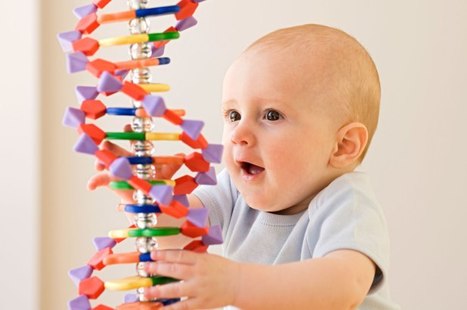Range of DNA repair in response to double-strand breaks induced in human preimplantation embryos remains uncertain due to the complexity of analyzing single- or few-cell samples. Sequencing of such minute DNA input requires a whole genome amplification that can introduce artifacts, including coverage nonuniformity, amplification biases, and allelic dropouts at the target site. We show here that, on average, 26.6% of preexisting heterozygous loci in control single blastomere samples appear as homozygous after whole genome amplification indicative of allelic dropouts. To overcome these limitations, we validate on-target modifications seen in gene edited human embryos in embryonic stem cells. We show that, in addition to frequent indel mutations, biallelic double-strand breaks can also produce large deletions at the target site. Moreover, some embryonic stem cells show copy-neutral loss of heterozygosity at the cleavage site which is likely caused by interallelic gene conversion. However, the frequency of loss of heterozygosity in embryonic stem cells is lower than in blastomeres, suggesting that allelic dropouts is a common whole genome amplification outcome limiting genotyping accuracy in human preimplantation embryos. DNA repair in response to DSBs in the preimplantation embryo is hard to analyze. Here the authors show that over 25% of pre-existing heterozygous loci in control single blastomere samples appeared as homozygous after whole genome amplification, therefore, they validated gene editing seen in human embryos in ESCs.
Research and publish the best content.
Get Started for FREE
Sign up with Facebook Sign up with X
I don't have a Facebook or a X account
Already have an account: Login
 Your new post is loading... Your new post is loading...
 Your new post is loading... Your new post is loading...
|
|

















Although gene editing technologies hold promise for preventing and treating debilitating inherited diseases, a new study reveals limitations that must be overcome before gene editing to establish a pregnancy can be considered safe or effective. The study, published recently in the journal Nature Communications, involved sequencing the genomes of early human embryos that had undergone genome editing using the CRISPR gene editing tool. The work calls into question the accuracy of a DNA reading procedure that relies on amplifying a small amount of DNA for genetic testing. This scientific method commonly used to analyze a tiny amount of DNA in early human embryos fails to accurately reflect genetic changes. In addition, the study also reveals that gene editing to correct disease-causing mutations in early human embryos can also result in unintended and potentially harmful changes to the genome. The findings raise a new scientific basis for caution for any scientist who might be about to use genetically modified embryos to establish pregnancies.